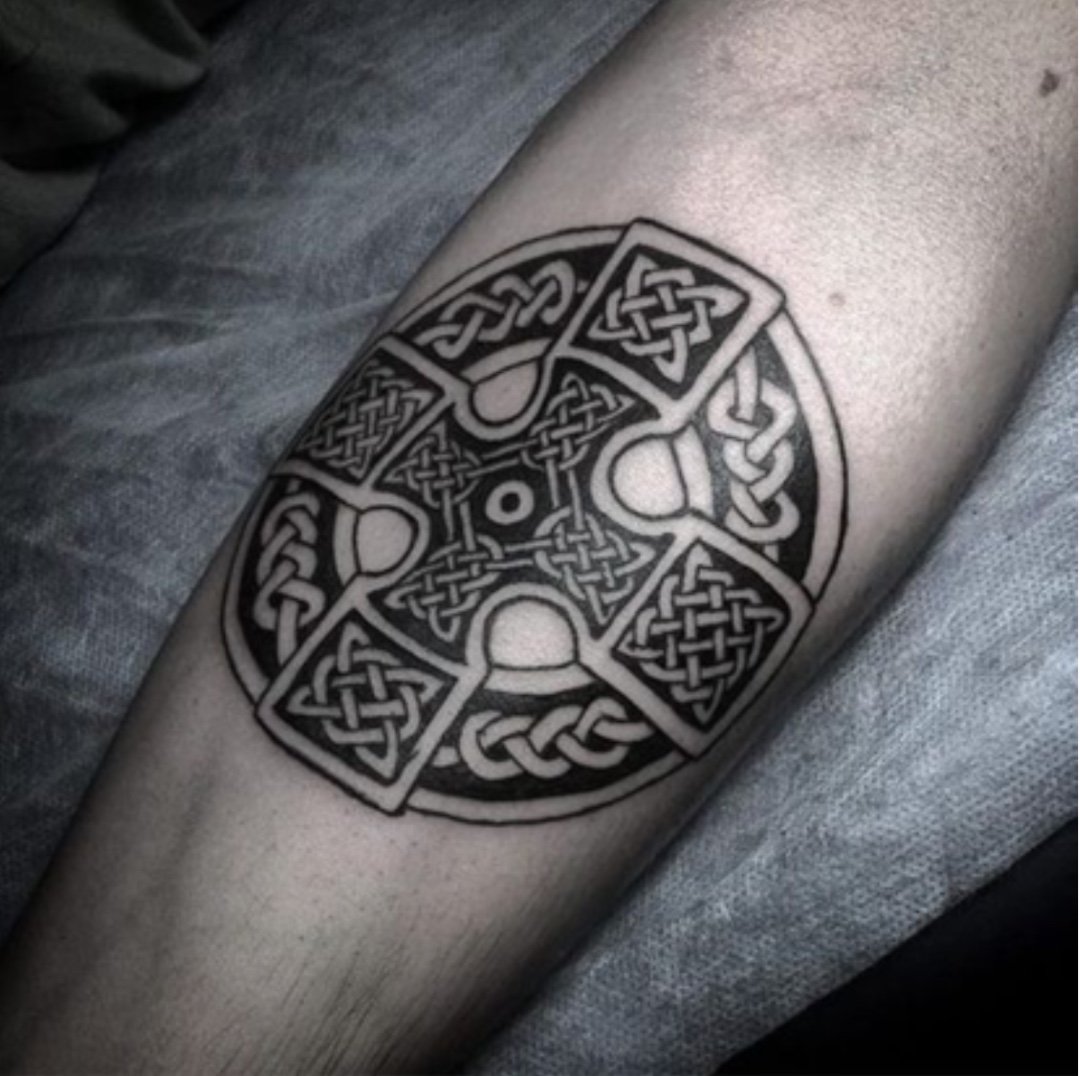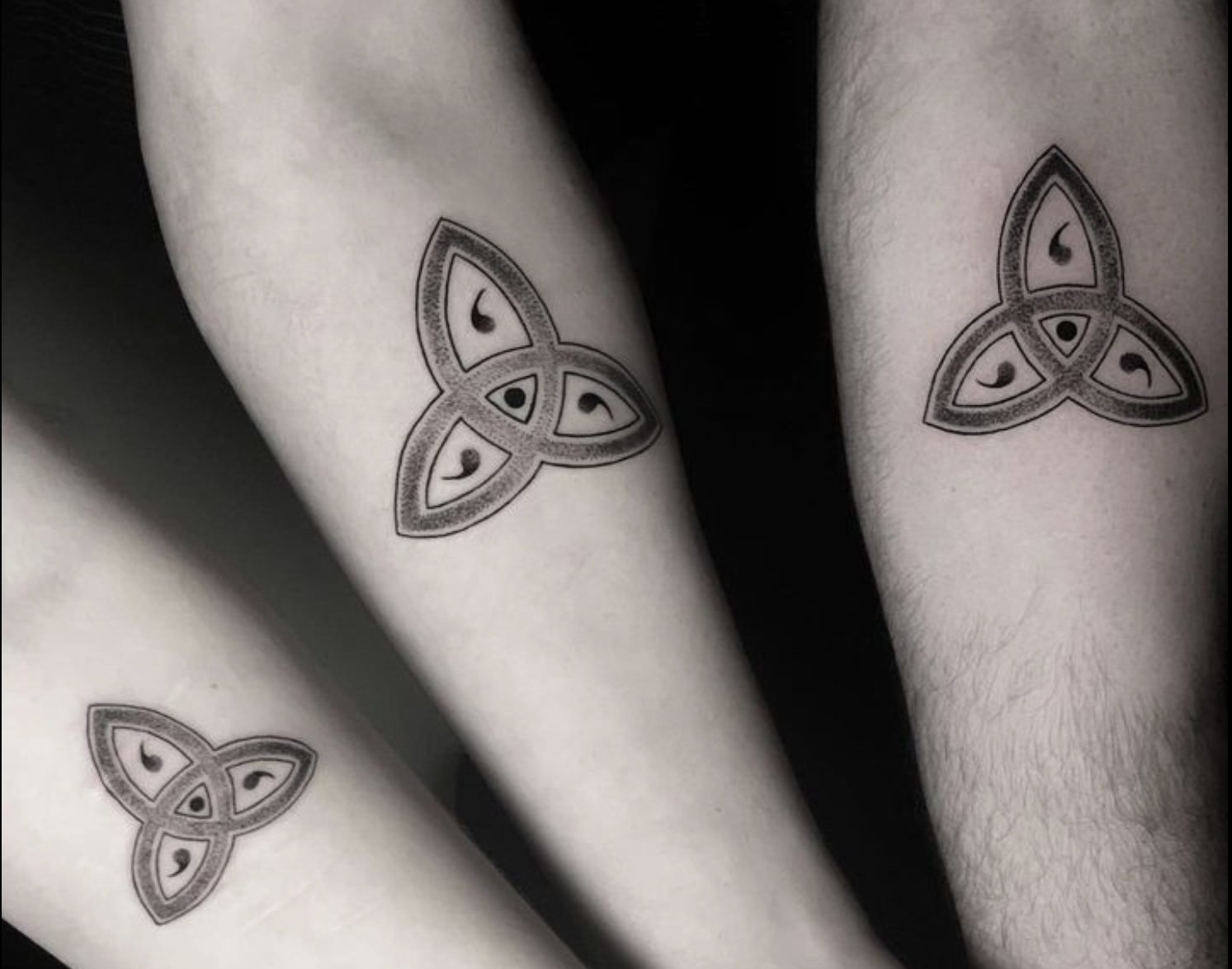Unraveling the Knots: A Guide to Celtic Tattoos
The intricate knots and symbols of ancient Celtic art have long captivated the imagination of people around the world. These designs are not just beautiful works of art; they carry deep meanings, representing concepts like love, loyalty, and strength. The rich history and spiritual depth embedded in these motifs make Celtic symbols one of the most popular choices for tattoos globally. But where did these symbols come from, and what do they truly represent?
Made By Blackhouse @aureoroma
Who Were the Ancient Celts?
The Celts were a group of tribes that flourished across Europe, especially during the Iron Age (600 B.C. to 43 A.D.). While they were never a unified kingdom, the Celts shared common cultural traits, including unique religious practices, craftsmanship, and social structures. It’s important to note that the Celts didn’t record their history in writing; much of what we know today has come from Roman sources. When the Roman Empire encountered the Celts, they labeled them as barbarians and fearless warriors. However, archaeological findings reveal a complex society with remarkable achievements, particularly in metalworking, art, and rituals.
One of the key aspects of Celtic religion was its focus on nature and the spiritual realm. The Celts were polytheists, meaning they believed in a multitude of gods and goddesses, each associated with different aspects of life and nature. They practiced rituals in forest shrines rather than temples, and their Druids—a group of priestly figures—held deep knowledge of spiritual and esoteric practices. The Celts also believed in an afterlife, often burying their dead with items like food, weapons, and ornaments to help them on their journey.
Did the Ancient Celts Have Tattoos?
While much of the evidence surrounding Celtic body art is speculative, there is historical proof that certain Celtic tribes, such as the Picts, were known for their unique use of body painting. The Picts, whose name comes from the Latin word picti (meaning “the painted ones”), would decorate their skin with dyes made from plants and minerals. These markings served various purposes, from intimidating enemies in battle to possibly even having medicinal benefits. It’s believed that the dyes used by the Picts could have had antiseptic properties, helping to heal wounds or protect against infection.
Made by Natt @aureoroma
Key Celtic Symbols and Their Meanings
Many of the Celtic symbols that have made their way into modern tattoos have their roots in ancient times. Each design carries its own rich meaning, often linked to spiritual beliefs, cosmic energy, and life cycles. Let’s explore some of the most iconic and meaningful Celtic symbols:
1. Spiral
The spiral is one of the oldest Celtic symbols ever discovered, with carvings found in County Meath, Ireland, dating back to around 3200 B.C. (predating the pyramids of Egypt!). In Celtic tattoos, spirals are not merely decorative; their different directions and forms convey deeper meanings. A single spiral is often seen as representing a person’s growth or development over time, as well as their connection to cosmic energy. A double spiral, which moves in opposite directions (clockwise and counterclockwise), is thought to symbolize the journey of life—the transition from one stage to another.
Tattoo Inspiration @aureoroma
2. Celtic Cross TATTOO
The Celtic cross is a symbol of the union of two worlds—the Christian faith and the pagan beliefs of the Druids. Legend has it that St. Patrick, a missionary in Ireland, created the first Celtic cross by combining the Christian cross with the circle—a symbol of eternity that was significant in Druidic worship. In a tattoo, this symbol represents the interconnection of faiths and the balance between spiritual beliefs.
Via @Pinterest
3. Triskele (Triple Spiral)
The triskele, or triple spiral, is another ancient symbol dating back to the Neolithic period. It can be found at the entrance of Newgrange in Ireland, a prehistoric monument. While its exact meaning is unclear, the triskele is often interpreted as representing strength, progress, and the ability to move forward. Some see it as a symbol of the three realms: the physical world, the spirit world, and the celestial realm—the sun, moon, stars, and planets.
Realizzato da Rowan @aureoroma
4. Trinity Knot (Triquetra)
The trinity knot, or triquetra, consists of three interwoven ovals and holds significant meaning in both pagan and Christian contexts. In Celtic traditions, it is said to represent the Triple Goddess—the three phases of femininity (Maiden, Mother, Crone). When Christianity spread to Ireland, many ancient symbols like the triquetra were repurposed to represent the Holy Trinity: the Father, the Son, and the Holy Spirit.
Via @Pinterest
5. Crann Bethadh (Tree of Life)
The Celtic Tree of Life, or Crann Bethadh, is an incredibly important symbol in Celtic culture. It often features an oak tree whose roots extend deep into the Earth while its branches reach toward the heavens. This symbol is a reminder of the interconnection between all living things and our strong connection to nature. It also represents strength, growth, and rebirth—ideas central to the Celtic worldview.
Via @Pinterest
6. Dara Knot
The Dara Knot is another representation of the oak tree, which was considered sacred by the Celts. According to Irish lore, the oak tree was seen as a link between worlds—the living world, the spirit world, and the world of ancestors. The interwoven lines of the Dara Knot symbolize the infinite nature of life, with no beginning or end, much like the cyclical nature of existence itself.
Respecting Celtic Culture Through Tattoos
While Celtic symbols are undoubtedly aesthetic and make for beautiful tattoos, it is essential to approach these designs with respect for the Celtic culture from which they originated. Many of these symbols carry significant spiritual and cultural weight, representing beliefs and traditions that have been passed down through generations.
If you are considering a Celtic tattoo, take the time to research the symbol’s meaning and history. Understanding the deeper significance behind the design will not only enhance your tattoo’s personal meaning, but it will also show respect for the rich cultural heritage from which these symbols emerged.
Final Thoughts
Celtic tattoos are more than just art; they are an embodiment of ancient spirituality, wisdom, and a connection to the natural world. The symbols you choose carry deep significance and tell a story that spans centuries. By understanding the rich history and meaning behind these symbols, you can honor the legacy of the Celts and carry their timeless messages with you.







